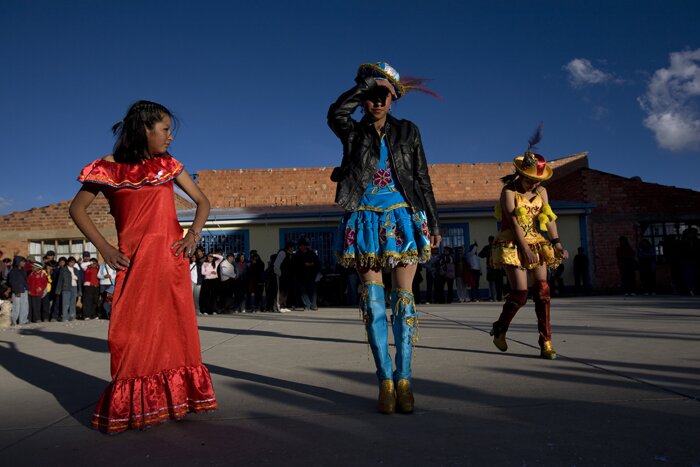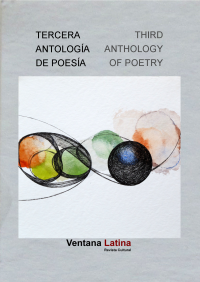Ten questions with photographer Karla Gachet
By Verónica Sanchis
Translated by Ellen Donnison
This October we had the fortune to interview Ecuadorian photographer Karla Gachet. She became the first woman to join the staff of graphic journalists at the newspaper Diario El Comercio. She is represented by the London based agency Panos Pictures and has had work featured in publications such as National Geographic Magazine, The Smithsonian and the New York Times.
Kara Gachet was born in Quito in 1977. Though she studied art and graphic design there, it was studying photojournalism at San Jose State University in California that ultimately captured her imagination. She began working for the newspaper Diario El Comercio in 2005. She also works freelance and is currently represented by the London based agency Panos Pictures. She has published two books alongside her fellow photographer and husband, Ivan Kashinsky. The first is entitled Historias Mínimas: De Ecuador a Tierra del Fuego (2009) (Mining Histories: From Ecuador to Tierra del Fuego) which documents a journey through Ecuador, Peru, Bolivia, Chile and Argentina. This book is comprised of fourteen photographic chronicles that were documented during their travels. Her latest book, Gypsy Kings (2012) is a collection of photographs taken in Romania that tell a story about a community of gypsy millionaires. Gachet has been recognised by some of the most prestigious competitions in photojournalism such as World Press Photo (2010), POY (2010) and BOP (2008). She also won third place for ‘Best Photographer of the Year’ for POYi Latin América (2011). Her photographs have been exhibited in Quito, Cuenca, London and Los Angeles. She creates work alongside Kashinsky under the collective Runa Photos (2011), a platform for documentary photography.
Ventana Latina: What inspired you to become a photographer?
Karla Gachet: I have always really liked the graphic theme. I started studying art and graphic design until one day I heard a talk from a photojournalist who was showing their work; in that moment I fell in love with the profession. It united everything that interests me the most in life and I knew that was what I wanted to do.
VL: What are you looking to explore in your photographic work?
KG: I am very interested in the human side of things, such as stories that convey a culture and its traditions as well as social and environmental problems.
VL: What inspires you about Latin America?
KG: Everything! Latin America is my home and therefore where my roots are. All of the magic realism that one could imagine can be found throughout its beautiful lands.
VL: Tell us about your experience photographing the Diablada de Oruro.
KG: It was really intense because it was teeming with so many spectators and dancers! The dances were stunning and the outfits are also very elaborate; people prepare all year for this dance. It finishes with all of the dancers congregating at the Iglesia del Socavón (the Socavón Church). It’s very emotional to see them kneel, cry and pray to the Virgin, dedicating their dance to her.
VL: How did you come to work in Esmeraldas, Ecuador and why?
KG: Since I was young I have been going to Esmeraldas because it has beaches closest to the Capital, Quito, where I grew up. Therefore I have always been attracted to the culture of the coast, which differs so much from that of the mountainous regions. I wanted to document a fragment of life from this province, which is considered to be extremely dangerous and very poor. I wanted to discover its wealth.
VL: What is the significance of the quinceañera celebration?
KG: In my country, the quinceañeras are like a rite of passage for girls about to become women. The girls I have photographed are from the same family, the Aguayo family, who live in the province of Los Ríos where the cowboys or montubios of the country are situated. For me it is an interesting ritual but even more interesting is having the opportunity to photograph this family through the years.
VL: How do you develop your projects from idea to practice?
KG: The idea always begins as one thing and then the practice ends up being something entirely different at the end! Therefore the planning only takes me up to a certain point. When one arrives at the origin of a story one begins to encounter many more stories.
VL: What are you looking to represent in your photographs?
KG: I suppose I try to tell a story in the most honest way possible but of course it’s always going to include an element of my opinion even though I try and avoid this. We always gravitate towards what interests us; it’s only in the decision of selecting one composition over another that will distinguish one photograph from another.
VL: Are you currently working on a new project?
KG: Yes, I have various new projects that I am working on and older projects that I am continuing to explore that I can’t stop working on. I have a baby of seven months and he is my latest ‘project’. He, above all, has been the most gratifying.
VL: What represents a good photograph for you?
KG: Something that stays imprinted on your mind a long time after first seeing it. One that makes you think, feel, smell, taste and hear; one that evokes your senses and touches your soul.
To discover more of Karla Gachet’s work, click here.









 Copyright © 2024
Copyright © 2024